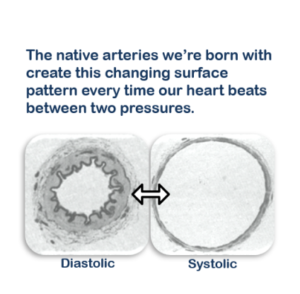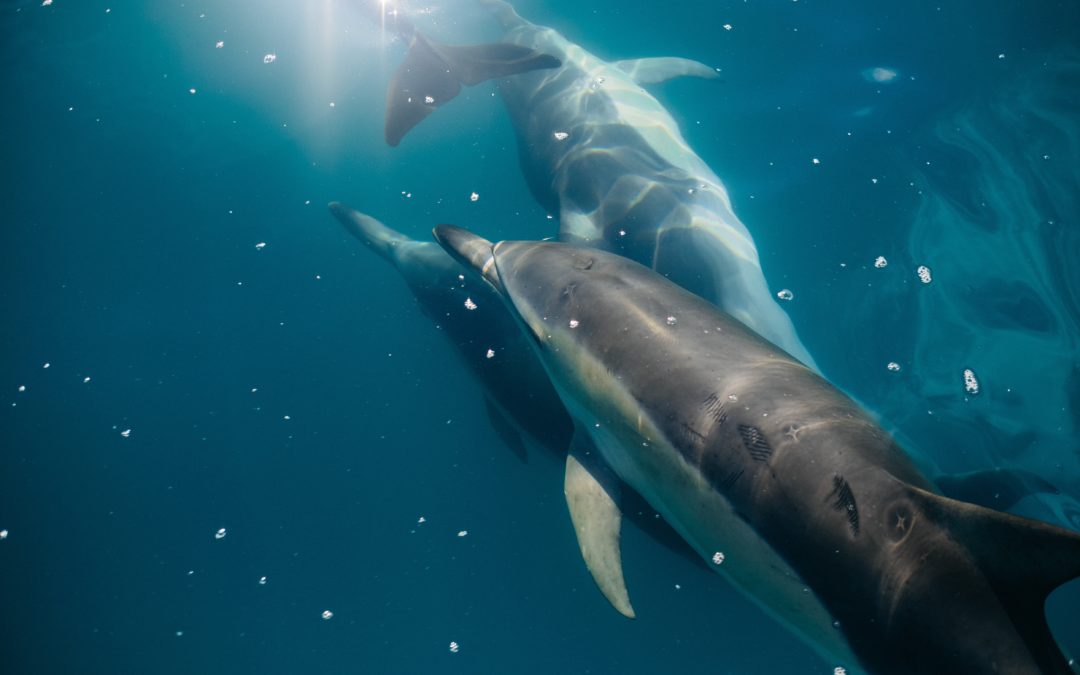The following is a contributed piece by guest writer, Jennifer Taekman.
People often try to rid wrinkles from surfaces, like skin and clothing. But these folds make for healthy human arteries, and perhaps surprisingly, are precisely what make them effective at self-cleaning.

Image courtesy of Aruga Technologies
Here’s how it works: as your heart beats, your cardiovascular system transitions between systolic and diastolic pressures causing the interior surface of your arteries to continuously shift between smooth and wrinkled (this process is also known as hemodynamics). Research has shown that this constant smoothing and wrinkling creates an efficient self-cleaning mechanism by preventing platelets from binding to the artery surface as blood flows through the vessels. This, in turn, prevents clot formation and helps to keep your cardiovascular system clean and healthy.
Coronary artery bypass grafting is the most common surgical intervention for adults with heart disease. Historically, surgeons have harvested a patient’s own artery or vein to bypass the problem area and serve as a new conduit for blood flow. However, these grafts significantly degrade and often fail over time, leading to poor outcomes and leaving the patient in a vulnerable position yet again. Alternatively, where a patient lacks a suitable vein to harvest, a synthetic vascular graft can be used. But with current technology, they tend to form clots that obstruct the graft, rendering it useless and leaving the patient with another blockage. The FDA also only allows grade A (non-recycled) plastics for the production of vascular grafts (ISO 14630:2012). More specifically, they use Teflon, the mainstay material for graft fabrication, which has a very energy intensive recycling process. How can this process be made more sustainable and effective for patients?
As part of the Biomimicry Launchpad, Aruga Technologies (Aruga) recognized the need for a new generation of synthetic vascular grafts that can be used with success. Aruga’s nature-inspired vascular reconstruction devices are designed to be “…engineered to have a doubled implant lifetime due to their ability to harness nature’s mechanisms and keep blood clot buildup from depositing on the blood contacting surface.” Aruga’s use of biomimicry thinking to develop its solution comes from observing and tapping into the billions of years of nature’s research and development to design an effective self-cleaning vascular surface.
To this end, Aruga has looked not only to human arteries, but also to dolphins for inspiration. Dolphin skin seems to be smooth, but it’s actually slightly rippled, and these ripples “are small enough that they leave few ‘niches’ for marine creatures to grip.” Wrinkles in human arteries prevent platelets from sticking, and ripples in dolphin skin prevent unwanted marine growth. Both species have evolved folds that keep surfaces clean – and make them the kind of wrinkles we want to keep around (and emulate).
“From sustainable architecture to other algae and water technologies, Aruga surfaces can add an element of sustainability that current solutions, such as complex chemical coatings and time-sensitive and expensive cleaning protocols, do not provide,” says CEO Joe Pugar. One of Aruga’s goals, Joe adds, is improving the duration of implants. This would eliminate many surgeries for malfunction, thus decreasing the thousands of tons of non-recyclable medical waste created in operating rooms each year.
Aruga is currently focusing its biomimetic self-cleaning technology – a “nature inspired surface design” – on vascular implant devices. However, its research and development potentially have much wider application in industries as varied as food processing, shipping, power distribution, engines, and wastewater treatment. Aruga’s novel technology will not only be beneficial for human health and society, but its sustainable production will be positive for the environment as well.
Disclaimer: The views and opinions expressed in this article are those of the authors and do not necessarily reflect the official policy or position of the Biomimicry Institute.
 Jennifer Taekman is a Humanities-Trained-Science-Enthusiast specializing in biomimicry. She retired from practicing law to raise her two kids, who have inspired her to be a good steward of our earth, an aspiring writer, and an environmental educator.
Jennifer Taekman is a Humanities-Trained-Science-Enthusiast specializing in biomimicry. She retired from practicing law to raise her two kids, who have inspired her to be a good steward of our earth, an aspiring writer, and an environmental educator.
Twitter: @JenniferTaekman
FaceBook: Jennifer Taekman

